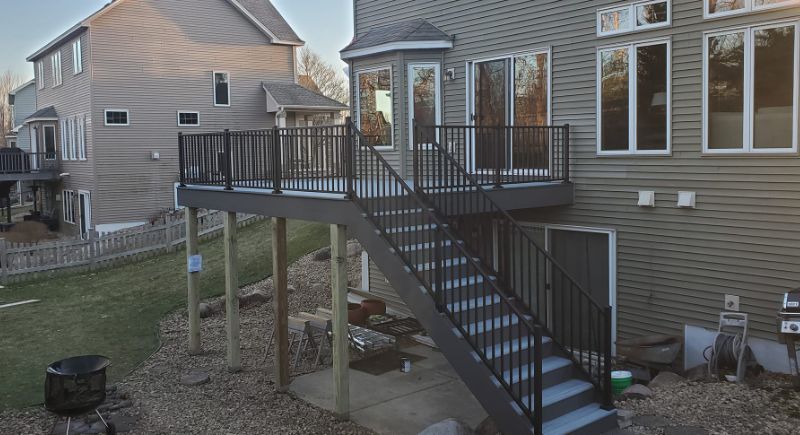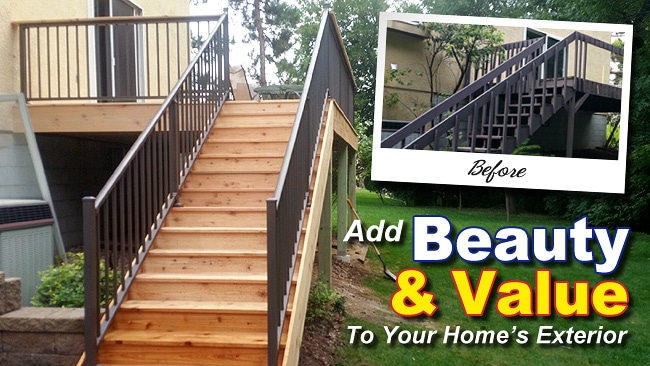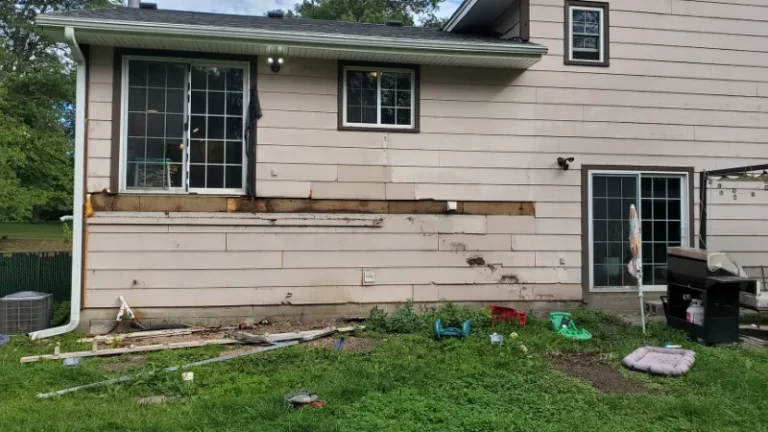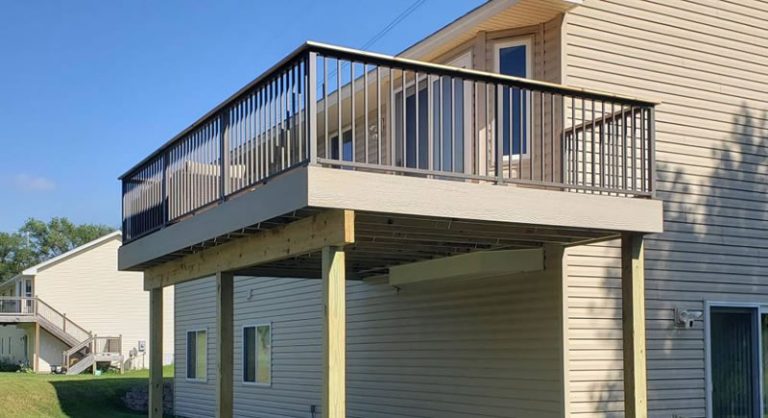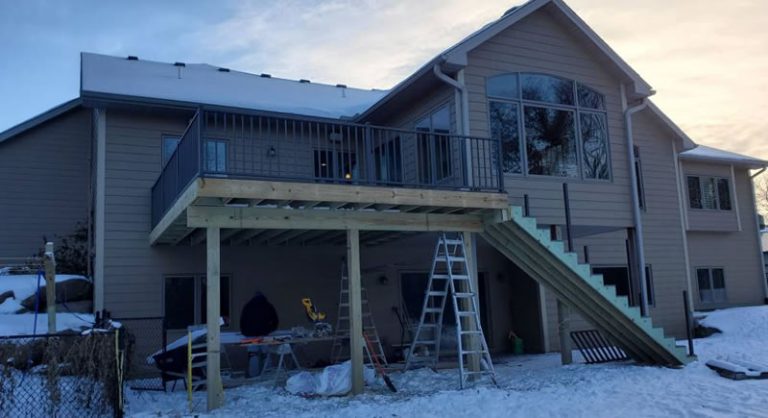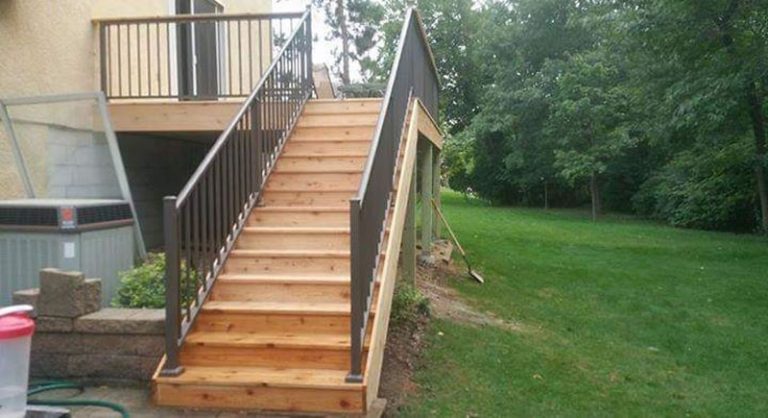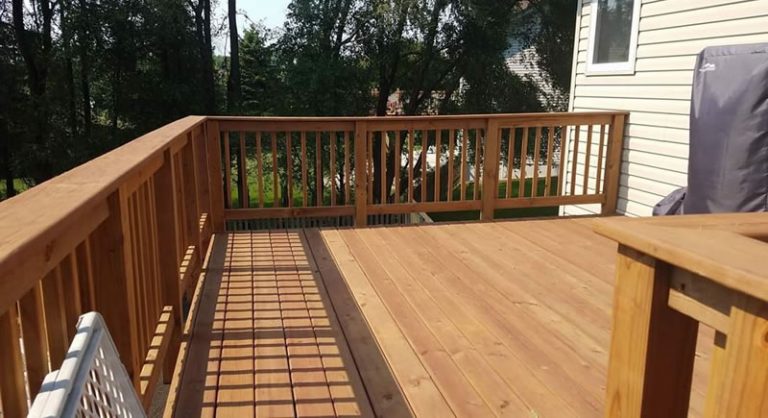Composite vs. Wood Decks: Which Is Right For Your Home?
Composite vs. Wood Decks: Which Is Right for Your Home?
When it comes to building a deck, one of the biggest decisions homeowners face is choosing between composite decking and wood decking. Each option has its own set of pros and cons, and the right choice depends on factors such as your budget, how much maintenance you're willing to do, and the overall look you want to achieve for your outdoor space.
At Thunderstruck Restorations, LLC, we specialize in building both composite and wood decks, using top-of-the-line products from Trex, TimberTech, Azek, and Deckorators for composite decks, as well as high-quality pressure-treated lumber and cedar for wood decks. In this post, we’ll explore the advantages and disadvantages of each decking material to help you decide which is best for your home.
Durability: Composite vs. Wood
One of the most important factors to consider when choosing a decking material is durability. Your deck will be exposed to the elements year-round, so you want to be sure it can withstand everything from intense sunlight to heavy rain and snow.
Composite Decking Durability
Composite decking is made from a blend of recycled plastic and wood fibers, creating a material that is highly resistant to weather damage, insects, and rot. This durability makes composite decking an excellent long-term investment for homeowners who want a deck that requires minimal upkeep.
- Trex is a leader in the composite decking industry, known for its high-performance decking lines like Trex Enhance and Trex Transcend. Both of these products are designed to resist fading, staining, and scratching, ensuring that your deck looks great year after year.
- Deckorators also offers durable composite decking, including its Voyage line, which features enhanced traction and strength, making it ideal for high-traffic areas. It’s designed to withstand heavy use while maintaining its beauty over time.
Wood Decking Durability
While wood decks can offer natural beauty, they require more maintenance to remain in good condition. Wood is vulnerable to rot, decay, and insect damage, particularly if not properly treated or maintained. Over time, wood decks may warp, crack, or splinter, especially in harsh weather conditions.
- Pressure-treated lumber is treated with chemicals to resist insects and decay, but it still requires regular staining or sealing to protect it from the elements. While pressure-treated wood is affordable, it is more likely to warp or crack over time compared to composite options.
- Cedar, on the other hand, is a more durable natural wood option. It’s naturally resistant to insects and rot but still needs regular sealing to prevent weathering and maintain its color. Cedar decks can last longer than pressure-treated decks with proper care, but they still require more maintenance than composite decking.
Maintenance: Composite vs. Wood
Maintenance is a key consideration when deciding between composite and wood decks. The amount of time and effort you’re willing to spend on maintaining your deck can heavily influence your decision.
Composite Decking Maintenance
One of the biggest advantages of composite decking is its low maintenance requirements. Unlike wood, composite decks do not need to be sanded, stained, or sealed. A simple cleaning with soap and water or a pressure washer once or twice a year is usually all that’s needed to keep a composite deck looking like new.
- Trex Enhance and Trex Transcend decking are both designed to resist mold, mildew, and moisture, which are common problems for wood decks. These products are engineered for easy maintenance, meaning you won’t have to spend weekends re-staining or worrying about wood rot.
- Deckorators Voyage decking is another low-maintenance option, featuring a cap that protects against fading, staining, and scratching. It’s also designed to resist moisture absorption, reducing the risk of mold growth and warping.
Wood Decking Maintenance
In contrast, wood decking requires regular upkeep to stay in good condition. At a minimum, wood decks should be cleaned and re-sealed every 1-2 years to protect against weather damage. Without proper maintenance, wood decks can become discolored, warped, or damaged by rot and insects.
- Pressure-treated lumber needs to be sealed every few years to prevent water damage and prolong its lifespan. Over time, the wood may develop cracks or splinters, requiring sanding and refinishing.
- Cedar decks, while more naturally resistant to decay, still need regular maintenance. To maintain the wood’s rich color and prevent it from fading to a gray tone, cedar should be cleaned and re-sealed or stained annually.
While wood decks can be beautiful, the time and effort involved in maintenance may be a drawback for some homeowners, especially those looking for a low-maintenance outdoor space.
Aesthetics: Composite vs. Wood
The aesthetic appeal of your deck is a significant factor in your decision. Both composite and wood decks can offer beautiful outdoor spaces, but each material has its own distinct look.
Composite Decking Aesthetics
Modern composite decking has come a long way in mimicking the look of natural wood. Composite boards are available in a wide range of colors, finishes, and textures, allowing homeowners to achieve the appearance of wood without the upkeep.
- Trex Transcend offers rich, wood-like finishes with a wide selection of colors, including deep browns and natural-looking grains. Whether you want the look of exotic hardwood or classic cedar, Trex Transcend can achieve the aesthetic you desire.
- Deckorators Voyage decking is designed with a textured finish that resembles real wood but with enhanced durability. It’s available in several colors, from classic grays to warm browns, allowing you to customize your deck to match your home’s style.
While composite decking offers a more uniform appearance than wood, it can still provide a warm and inviting outdoor space. Plus, composite boards won’t fade, splinter, or warp, so your deck will maintain its aesthetic appeal for years to come.
Wood Decking Aesthetics
For homeowners who prefer the look and feel of natural wood, wood decking offers a traditional, timeless appearance that composite materials can’t fully replicate. The natural grain and warmth of wood provide a classic look that many homeowners find appealing.
- Pressure-treated lumber can be stained or painted to achieve a variety of looks, though its aesthetic appeal may diminish over time without regular maintenance.
- Cedar is known for its rich color and fine grain, making it a favorite for homeowners who want a high-end wood deck. Cedar can be left to age naturally into a silver-gray color, or it can be stained to preserve its warm reddish hue.
While wood offers a more authentic appearance, it’s important to note that maintaining its aesthetic appeal requires regular upkeep, including staining and sealing.
Cost: Composite vs. Wood
The cost of your deck is an important factor in deciding which material to choose. Both composite and wood decks come with different price points, depending on the type of wood or composite material you select.
Composite Decking Cost
Composite decking tends to be more expensive upfront than wood, but its low maintenance costs can make it more affordable in the long run. Homeowners who invest in composite decking typically save money over time since they don’t need to spend on sealing, staining, or repairing the deck.
- Trex Enhance is one of the more affordable options in the Trex line, providing a balance between cost and performance. It’s designed to offer the benefits of composite decking at a lower price point, making it a great option for budget-conscious homeowners.
- Trex Transcend, on the other hand, is a premium product with higher upfront costs but superior durability and aesthetics. While more expensive, it offers long-term savings due to its minimal maintenance requirements.
- Deckorators Voyage falls into the premium composite decking category, offering enhanced strength and beauty at a higher price point. However, its low maintenance needs and long lifespan can offset the initial cost.
Wood Decking Cost
Wood decking is typically more affordable upfront than composite decking, but it comes with ongoing maintenance costs. Homeowners need to factor in the cost of sealing, staining, and potentially replacing damaged boards over the years.
- Pressure-treated lumber is the most affordable decking option, making it a popular choice for homeowners on a tight budget. However, the long-term costs of maintaining a pressure-treated deck should be considered.
- Cedar decks come with a higher price tag than pressure-treated wood but offer a more luxurious look and natural resistance to decay. Still, the ongoing maintenance costs of sealing and staining can add up over time.
While wood may seem like the more affordable option at first glance, the cost of regular maintenance should be factored into your decision.
Which Is Right for You?
Choosing between composite and wood decking depends on your priorities. If you want a deck that requires little maintenance, offers long-term durability, and provides a wide range of aesthetic options, composite decking may be the right choice for you. Products like Trex Enhance, Trex Transcend, and Deckorators Voyage offer high performance and beauty with minimal upkeep.
On the other hand, if you prefer the natural look of wood and are willing to invest time and effort into maintaining it, a wood deck made from pressure-treated lumber or cedar could be the perfect fit.
Contact Thunderstruck Restorations To Get Your Deck Estimate Today!
At Thunderstruck Restorations, LLC, we specialize in building both composite and wood decks, using the best materials available to suit your needs and style. As a certified TrexPro and Deckorators Certified Pro, we offer expert installation and access to the top composite decking products on the market. Whether you're interested in the low-maintenance benefits of composite or the timeless appeal of wood, we’re here to help you create the perfect outdoor living space.
We proudly serve Andover, Blaine, Coon Rapids, East Bethel, Forest Lake, Ham Lake, Lino Lakes, Saint Paul, and the Twin Cities area.
Contact us today to schedule a consultation and start planning your dream deck!

